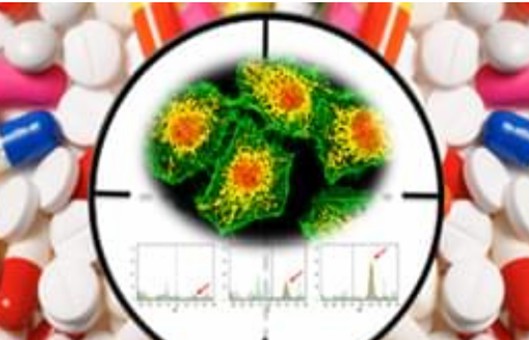Resources
-
Cell Services
- Cell Line Authentication
- Cell Surface Marker Validation Service
-
Cell Line Testing and Assays
- Toxicology Assay
- Drug-Resistant Cell Models
- Cell Viability Assays
- Cell Proliferation Assays
- Cell Migration Assays
- Soft Agar Colony Formation Assay Service
- SRB Assay
- Cell Apoptosis Assays
- Cell Cycle Assays
- Cell Angiogenesis Assays
- DNA/RNA Extraction
- Custom Cell & Tissue Lysate Service
- Cellular Phosphorylation Assays
- Stability Testing
- Sterility Testing
- Endotoxin Detection and Removal
- Phagocytosis Assays
- Cell-Based Screening and Profiling Services
- 3D-Based Services
- Custom Cell Services
- Cell-based LNP Evaluation
-
Stem Cell Research
- iPSC Generation
- iPSC Characterization
-
iPSC Differentiation
- Neural Stem Cells Differentiation Service from iPSC
- Astrocyte Differentiation Service from iPSC
- Retinal Pigment Epithelium (RPE) Differentiation Service from iPSC
- Cardiomyocyte Differentiation Service from iPSC
- T Cell, NK Cell Differentiation Service from iPSC
- Hepatocyte Differentiation Service from iPSC
- Beta Cell Differentiation Service from iPSC
- Brain Organoid Differentiation Service from iPSC
- Cardiac Organoid Differentiation Service from iPSC
- Kidney Organoid Differentiation Service from iPSC
- GABAnergic Neuron Differentiation Service from iPSC
- Undifferentiated iPSC Detection
- iPSC Gene Editing
- iPSC Expanding Service
- MSC Services
- Stem Cell Assay Development and Screening
- Cell Immortalization
-
ISH/FISH Services
- In Situ Hybridization (ISH) & RNAscope Service
- Fluorescent In Situ Hybridization
- FISH Probe Design, Synthesis and Testing Service
-
FISH Applications
- Multicolor FISH (M-FISH) Analysis
- Chromosome Analysis of ES and iPS Cells
- RNA FISH in Plant Service
- Mouse Model and PDX Analysis (FISH)
- Cell Transplantation Analysis (FISH)
- In Situ Detection of CAR-T Cells & Oncolytic Viruses
- CAR-T/CAR-NK Target Assessment Service (ISH)
- ImmunoFISH Analysis (FISH+IHC)
- Splice Variant Analysis (FISH)
- Telomere Length Analysis (Q-FISH)
- Telomere Length Analysis (qPCR assay)
- FISH Analysis of Microorganisms
- Neoplasms FISH Analysis
- CARD-FISH for Environmental Microorganisms (FISH)
- FISH Quality Control Services
- QuantiGene Plex Assay
- Circulating Tumor Cell (CTC) FISH
- mtRNA Analysis (FISH)
- In Situ Detection of Chemokines/Cytokines
- In Situ Detection of Virus
- Transgene Mapping (FISH)
- Transgene Mapping (Locus Amplification & Sequencing)
- Stable Cell Line Genetic Stability Testing
- Genetic Stability Testing (Locus Amplification & Sequencing + ddPCR)
- Clonality Analysis Service (FISH)
- Karyotyping (G-banded) Service
- Animal Chromosome Analysis (G-banded) Service
- I-FISH Service
- AAV Biodistribution Analysis (RNA ISH)
- Molecular Karyotyping (aCGH)
- Droplet Digital PCR (ddPCR) Service
- Digital ISH Image Quantification and Statistical Analysis
- SCE (Sister Chromatid Exchange) Analysis
- Biosample Services
- Histology Services
- Exosome Research Services
- In Vitro DMPK Services
-
In Vivo DMPK Services
- Pharmacokinetic and Toxicokinetic
- PK/PD Biomarker Analysis
- Bioavailability and Bioequivalence
- Bioanalytical Package
- Metabolite Profiling and Identification
- In Vivo Toxicity Study
- Mass Balance, Excretion and Expired Air Collection
- Administration Routes and Biofluid Sampling
- Quantitative Tissue Distribution
- Target Tissue Exposure
- In Vivo Blood-Brain-Barrier Assay
- Drug Toxicity Services
Drug Feeding Protocol
GUIDELINE
Drosophila melanogaster, commonly known as the fruit fly, is a widely used model organism in biological research due to its rapid life cycle, genetic tractability, and well-mapped genome. Drug feeding protocols in Drosophila involve administering pharmacological agents to study their effects on various biological processes, including development, behavior, and disease mechanisms. This protocol covers the steps for drug feeding in fly models.
METHODS
- Collect flies for feeding: Clear bottles the day before collecting; Select the appropriate genotype for feeding.
- Prepare drugs to be fed: Thaw drugs; Add 3 mL water to each vial; Add an appropriate number of drugs to water, and mix by swirling.
- Make fly food in vials that contain water and drug: Place the label that matches the drug you are using on the vial; Add dry fly food to make a thick slurry, water will be absorbed in minutes; Turn on the gas and knock out flies; Put up to 40 flies into the vial; Put the flies in a box in the 25°C incubator.
- Flies are fed 3 doses of each drug. Flies are fed for a total of 10 days.
- Harvest flies at 10 days and fixes in formalin for histological analysis or process appropriately for other studies as needed.
Creative Bioarray Relevant Recommendations
- Creative Bioarray provides various in vitro ADME/PK services, including high-throughput ADME screening, in vitro binding, in vitro metabolism, in vitro permeability, and transporter assays.
- We also provide in vivo drug metabolism and pharmacokinetic (DMPK) services to support drug development studies of in vivo absorption, distribution, metabolism, and excretion of drug candidates. Our in vivo DMPK services cover a comprehensive range of different animal studies in several species.
NOTES
- Fly age and health. Select files of similar age and health status to minimize variability in the results.
- Food medium composition. Use a consistent recipe for the food medium to ensure reproducibility. Be cautious about using additives (e.g., preservatives) that may affect drug stability or fly health.
- Determine the appropriate dose. Conduct preliminary experiments to find a suitable dosage range for your drug. Too high or too low doses can yield misleading results.
- Drug stability. Store drugs at recommended temperatures and conditions to maintain stability and efficacy. Use fresh solutions whenever possible, as drugs can degrade over time.
- Control groups. Always include control groups receiving untreated food to establish baseline behavior and health for comparison.
- Behavioral monitoring. Monitor flies for changes in behavior, activity levels, and survival throughout the experiment. Record any significant changes or adverse effects observed during the study.
RELATED PRODUCTS & SERVICES
For research use only. Not for any other purpose.



